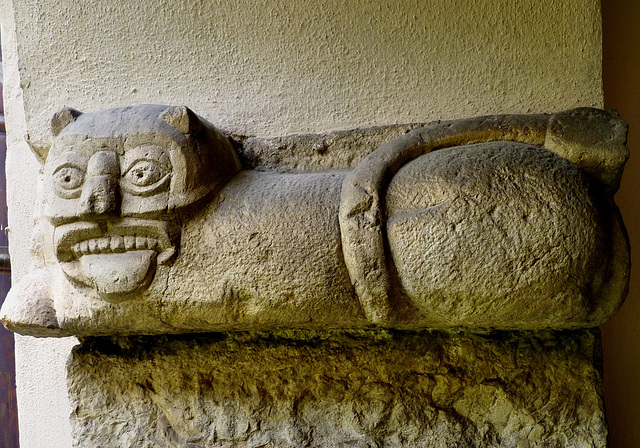Berchtesgaden - Provostry
Berchtesgaden - Provostry
Passau - Wilder Mann
Passau - St. Stephan's Cathedral
Passau - St. Stephan's Cathedral
Passau - Niedernburg Monastery
Passau - Danube / Inn
Bad Goegging - St. Andreas
Bad Goegging - St. Andreas
Bad Goegging - St. Andreas
Bad Goegging - St. Andreas
Bad Goegging - St. Andreas
Bad Goegging - St. Andreas
Bad Goegging - St. Andreas
Bad Goegging - St. Andreas
Pfoerring - St. Leonhard
Pfoerring - St. Leonhard
Straubing
Straubing - St. Peter
Straubing - St. Peter
Straubing - St. Peter
Straubing - St. Peter
Straubing - St. Peter
Berchtesgaden - Provostry
Berchtesgaden - Provostry
Berchtesgaden - Provostry
Berchtesgaden - Provostry
Berchtesgaden - Provostry
Berchtesgaden - Provostry
Berchtesgaden - Provostry
Berchtesgaden - Provostry
Berchtesgaden - Provostry
Berchtesgaden - Provostry
Berchtesgaden - Provostry
Berchtesgaden - Provostry
Berchtesgaden - Provostry
Berchtesgaden - Provostry
Berchtesgaden - Provostry
Berchtesgaden - Provostry
Berchtesgaden - Provostry
Berchtesgaden - St. Bartholomae
Berchtesgaden - St. Bartholomae
Bad Reichenhall - St. Nikolaus
Bad Reichenhall - St. Nikolaus
Bad Reichenhall - St. Nikolaus
Location
See also...
Keywords
Authorizations, license
-
Visible by: Everyone -
All rights reserved
-
58 visits
Berchtesgaden - Provostry


The Berchtesgaden monastery was founded in 1102 as community of Augustinian Canons by Count Berengar of Sulzbach, a friend of Henry V. The Canons felt nor safe and comfortable in the wild, wooded area - and gave up the place soon after.
They returned with the first Provost Eberwin around 1120 - and started a success story. The monastery became an Imperial abbey in already 1194. In 1380 the provosts achieved the status of an ecclesistical "Reichsfuerst" and in the 1550s they even held a direct vote in the Reichstag assembly as "Prince-Provosts". From the very beginning upto the secularisation of the monastery in 1803 it was open only for the offsprings of noble families, what actually created this political power. In 1810 the territory of the former monastery fell to the newly established Kingdom of Bavaria, so that the House of Wittelsbach could finally transform the monastic buildings into a summer palace.
The former collegiate church "St. Peter and St. John the Baptist" serves as a parish church since 1803.
The most important piece of architecture (for me) is the cloister. Most of the structure survived all the time, and even when the House of Wittelsbach converted the provostry into a summer palace, the old closter stayed untouched. The carving style here is very rough and differs from the sophisticated works seen an St. Zeno, less than 20 kms south. The motifs and symbols found here are very graphic.
Very large horizonal imposts, "crown" some of the pillars here. The capitals below these imposts are kind of "traditional", but the horizontal carvings on the imposts are unique. These large horizontal ("swimming") sculptures are carved in a different, more sophisticated style, than the carvings seen on the other side of the cloister, but not all have the same elegance.
Another snarling lion.
They returned with the first Provost Eberwin around 1120 - and started a success story. The monastery became an Imperial abbey in already 1194. In 1380 the provosts achieved the status of an ecclesistical "Reichsfuerst" and in the 1550s they even held a direct vote in the Reichstag assembly as "Prince-Provosts". From the very beginning upto the secularisation of the monastery in 1803 it was open only for the offsprings of noble families, what actually created this political power. In 1810 the territory of the former monastery fell to the newly established Kingdom of Bavaria, so that the House of Wittelsbach could finally transform the monastic buildings into a summer palace.
The former collegiate church "St. Peter and St. John the Baptist" serves as a parish church since 1803.
The most important piece of architecture (for me) is the cloister. Most of the structure survived all the time, and even when the House of Wittelsbach converted the provostry into a summer palace, the old closter stayed untouched. The carving style here is very rough and differs from the sophisticated works seen an St. Zeno, less than 20 kms south. The motifs and symbols found here are very graphic.
Very large horizonal imposts, "crown" some of the pillars here. The capitals below these imposts are kind of "traditional", but the horizontal carvings on the imposts are unique. These large horizontal ("swimming") sculptures are carved in a different, more sophisticated style, than the carvings seen on the other side of the cloister, but not all have the same elegance.
Another snarling lion.
- Keyboard shortcuts:
Jump to top
RSS feed- Latest comments - Subscribe to the comment feeds of this photo
- ipernity © 2007-2024
- Help & Contact
|
Club news
|
About ipernity
|
History |
ipernity Club & Prices |
Guide of good conduct
Donate | Group guidelines | Privacy policy | Terms of use | Statutes | In memoria -
Facebook
Twitter

Sign-in to write a comment.